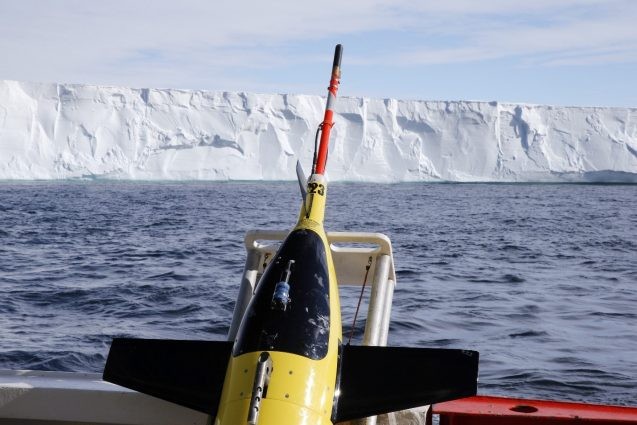Autonomous Robots Carry Out First Long-Term Missions Under Antarctic Ice
A team of autonomous ocean robots deployed in January 2018 has carried out the first year-long observations under an Antarctic ice shelf.
A team of autonomous ocean robots deployed in January 2018 has carried out the first year-long observations under an Antarctic ice shelf. The robots, turned loose under the Dotson Ice Shelf, repeatedly reached as far as 50 kilometers from open water, among the farthest trips yet into this treacherous environment.
“Most of the uncertainty in global sea level rise predictions for decades to centuries is from ice sheets,” said Pierre Dutrieux, a research professor at Columbia University’s Lamont-Doherty Earth Observatory who is involved in the project. “A key driver is interaction with the ocean heat, and these new tools open tantalizing perspectives to improve on current understanding.”
“This is the first time any of the modern, long-endurance platforms have made sustained measurements under an ice shelf. It’s a major step forward,” said Craig Lee, a University of Washington professor of oceanography also working on the project.

Many Antarctic glaciers terminate in large ice shelves that float out over the ocean, acting as buttresses for the ice on the land behind them. It is feared that if ice shelves collapse or weaken, the glaciers may accelerate their movement toward the sea, increasing the rate of sea level rise.
The mission set out in late 2017 to test a new approach for gathering data under an ice shelf. On Jan. 24, 2018, three autonomous devices called Seagliders were dropped from the Korean icebreaker R/V Araon. This week, two of the self-navigating Seagliders reached the milestone of one year of continuous operation around and under the ice shelf. The project is a partnership between the University of Washington, Lamont-Doherty and the Korean Polar Research Institute; the Paul G. Allen Family Foundation funded the work.
Robot submarines operated by the British Antarctic Survey, known as Autosub3 and Boaty McBoatface, successfully completed voyages in 2009, 2014 and 2018. These missions surveyed similar distances into the cavity, but each deployment lasted only 24 to 48 hours, due to the need for a support ship.
The Seagliders are smaller, lighter devices that can operate on their own for more than a year without any ship support. The group first moored three acoustic beacons to the seafloor to allow navigation under the ice shelf. It then sent the Seagliders, developed and built at the University of Washington, to use preprogrammed navigation systems to travel under the ice shelf to collect data.
The mission also deployed four floating instruments that drift with the currents at preselected depths above the bottom, or below the top of the cavity, while periodically bobbing up and down to collect more data. All four successfully traveled deep under the ice shelf near the seafloor. Three were flushed out with fresh meltwater near the top of the ice cavity about six to eight weeks later. The fourth one just reappeared, on Jan. 5.
During the past year, the autonomous robots made a total of 18 trips into the cavity, with the longest totaling 140 kilometers. The Seagliders also made 30 surveys along the face of the ice shelf.
The researchers are now analyzing the data for future publication, to better understand how seawater interacts with the ice shelves and improve models of ice sheet behavior.
Adapted from a press release by the University of Washington.
